Introduction
- Books Name
- CBSE Class 6 Science Book
- Publication
- Param Publication
- Course
- CBSE Class 6
- Subject
- Science
Introduction
Life is impossible without plants. We do find a variety of plants around us. These plants we come across practically everywhere. Plants differ in size and shape. Some are small while others are big.
Type of Plants
On the basis of their size and shape, plants have been divided into the following three categories.
(i) Herbs (ii) Shrubs (iii) Trees
Herbs : Plants which have soft, green and perishable stems are called herbs. They are generally smaller in size, they are not more than one metre in height and may live for 1-2 seasons. Examples of some herbs are grass, maize, rice, mint, coriander, etc.
Shrubs : Plants with woody stems, with branches of almost equal size arising from the stem immediately above the soil are called shrubs. They look like bushes and are medium-sized plants. They survive for many years, though less than trees. Example : China rose, lemon, pomegranate, jasmine, nerium, etc.
Tree : The trees are tall and big plants. They have one hard woody stem called trunk.It bears woody branches, twigs and leaves at some distance above the ground. Coconut and palm are also trees, though they do not contain branches. Trees generally survive for many years. Examples : Mango, neem, palm, banyan, etc.
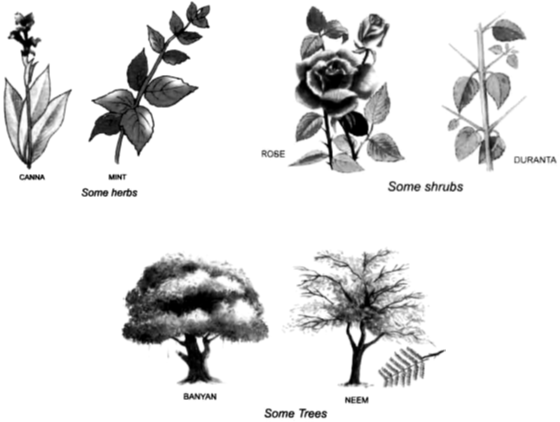
Creepers : Plants with weak stems that can not stand upright and spread on the ground are called creepers eg. Bottle gourd, bitter gourd, pumpkin.
Climbers : Plants which take support on neighbouring structure and climb up are called climbers eg. Betel, grapes, Money plants.
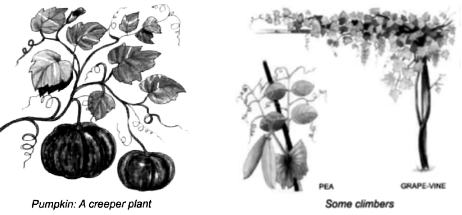
Parts of Flowering Plants
1. Stem 2. Leaves 3. Roots 4. Flower 5. Seeds
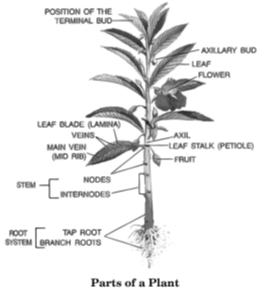
Herbs, Shrubs and Trees
- Books Name
- CBSE Class 6 Science Book
- Publication
- Param Publication
- Course
- CBSE Class 6
- Subject
- Science
Flower
• The Flower is the site of sexual reproduction in plants .
• A flower may be defined as a modified shoot in which nodes and internodes are highly condensed.
• It develops from the floral bud.
• Parts of a Flower : Flowers vary in size, shape and colour but all flowers have the same basic parts. A Flower consists of following parts :
• Pedicel and Thalamus
• Calyx or Sepals
• Corolla or Petiols
• Androecium / stamen / Male Reproductive organ
• Gynoecium / Pistils/ Female Reproductive organ.
(i) Pedicel and Thalamus :
• The Flower is borne on a stalk called pedicel.
• The upper most end of the pedicel is some what swollen. This swollen part of the pedicel is known as the Thalamus.
• It bears all the four whorls of a flower.
(ii) Calyx : It is the First outermost whorl of a Flower.
• It consist of leaf like structures called sepals.
• Sepals are generally green in colour and manufacture food.
• They also protect the new delicate inner parts of the flower during the bud stage.
(iii) Corolla : It is the second whorl of a flower.
• Each segment of the corolla is known as a petals.
• Petals are usually brightly coloured due to the presence of pigments.
• The bright colour, sweet smell and nectar attract the insect which in turn, help in pollination.
(iv) Androecium / stamen / male Reproductive organ :
• It is the third floral whorl which is composed of one or more male reproductive organs called stamen A typical stamen is differentiated into three parts they are filament, connective and anther.
(A) Filament : It is form the stalk that bears more or less cylindrical or ovoid anther
(B) Connective : It connects anther to filament.
(C) Anther : It is present on the top of filament. Each anther consist of two lobes that is why it is called as bilobed.
• Each anther lobe has two pollen sac which contain millions of tiny microscopic pollen grain, called as microspores.
• The pollen grains are like yellow dusty powder in appearance.
(v) Gynoecium / pistil / Female Reproductive organ :
• It is located in the centre of flower.
• The gynoecium is the fourth whorl which is composed of one or more carpels.
• The freely occuring units of the carpels in a flower are called pistils .
• Each pistil usually consist of three distinct parts :
(A) ovary (B) Style (C) Stigma
(A) Ovary : It is a basal swollen part of the pistil. The ovary bears the ovules on a raised tissue called the placenta. Each ovule contains the female reproductive cell.
(B) Style : From the top of the ovary arise a long elongated structure which connects the stigma with ovary. It is meant for raising the level of the stigma.
(C) Stigma : The terminal end of style is called as stigma.
• The stigma is normally rough, hairy and sticky.
• It is meant for receiving pollen grains during pollination.
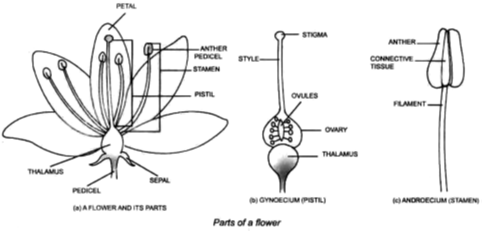
Note : Structure of the flower is not always the same. The number of sepals, petals, stamens and pistils may also be different in different flowers. Sometimes, some of these parts may even be absent. When choosing flowers to study, avoid using Marigold, chrysanthemum and sun flower. These are not single flowers but group of flowers.
Function of a flower
Reproduction :
• Flower is a reproductive unit of a plant and it grows into the fruit which bears seeds.
• A typical flower possesses male and female reproductive organs.
• The male sex cells are contained in the pollen grains found in the anther.
• The Female sex cells are contained in the ovules found in the ovaries.
• Pollination : Pollen grains are transferred from the anther to the stigma by a process called pollination.
• Fertilization : After pollination, a male cell and a female cell fuse together and this process is called fertilization.
• Under favourable conditions seed germinate and give rise to seedling which develop into new plants. This process is called sexual Reproduction.
• Usefulness of flowers For Human Beings :-
(i) Aesthetic : Flowering plants are grown in houses gardens , parks and roadside for their brilliant colour, beautiful shapes and sweet smell.
(ii) Cut Flowers : Flowers yield perfumes or scents. The common ones are rose, Jasmine and also for decoration.
(iii) Spices : cloves, so often used as a spice and in medicine, are the dried Flower buds of the clove plant.
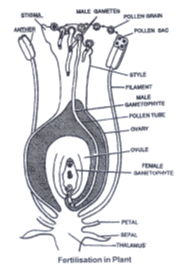
Herbs, Shrubs and Trees
- Books Name
- Class 6 Science Book
- Publication
- PathSet Publications
- Course
- CBSE Class 6
- Subject
- Science
Herbs, Shrubs and Trees
As we all know, Earth is the only planet in our solar system that has the viable conditions for life to exist. While the presence of water and oxygen is the main reason, we must also recognize that life would not have been possible if it weren’t for the oxygen-emitting plants, life would not have been able to take shape on Earth. These plants are not only our source of oxygen but also the major source of the food that we eat.
Plants are living things that grow on land or in water. From snowy mountain slopes to dry, hot deserts, plants can survive almost anywhere on Earth.
Plants can be divided into two groups :
(i). Flowering Plants
Ex : sunflowers, orchids
(ii). Non-flowering Plants
Ex : mosses and ferns
All plants make their own food, taking energy from sunlight. Unlike animals, plants cannot move from place to place, and most are rooted in the ground.
Herbs, Shrubs and Trees
Herbs, shrubs and trees: Plants are usually grouped into herbs, shrubs and trees on the basis of their heights, stem and branches:
- Herbs: Plants with green and tender stems are called herbs. They are usually short and sometimes do not have branches.
- Shrubs: Some plants have branches arising from the base of the stem. The stem is hard but not very thick. They are called shrubs.
- Trees: Some plants are very tall and have hard and thick stems. They have branches arising from the upper part of the stem. They are called trees.
Creepers and climbers:
The stem of some plants are very thin and weak. They either lie on the ground or need support to stand up. They are called creepers and climbers respectively.
- Climbers are much more advanced than creepers. Climbers have a very thin, long and weak stem which cannot stand upright, but they can use external support to grow vertically and carry their weight. These types of plants use special structures called tendrils to climb. Few climber’s plants names include pea plant, grapevine, sweet gourd, money plant, jasmine, runner beans, green peas, etc.
- Creepers, as the name suggests, are plants that creep on the ground. They have very fragile, long, thin stems that can neither stand erect nor support all its weight. Examples include watermelon, strawberry, pumpkin and sweet potatoes.
We can classify plants on the basis of the thickness of their stems and the place of origin of their branches, into three broad categories:
Herb: These are plants that have green and frail stems. Usually, these are small plants with not many branches.
Some common examples of herbs are Basil, Coriander, Mint, Oregano, Thyme, Parsley, Rosemary etc.

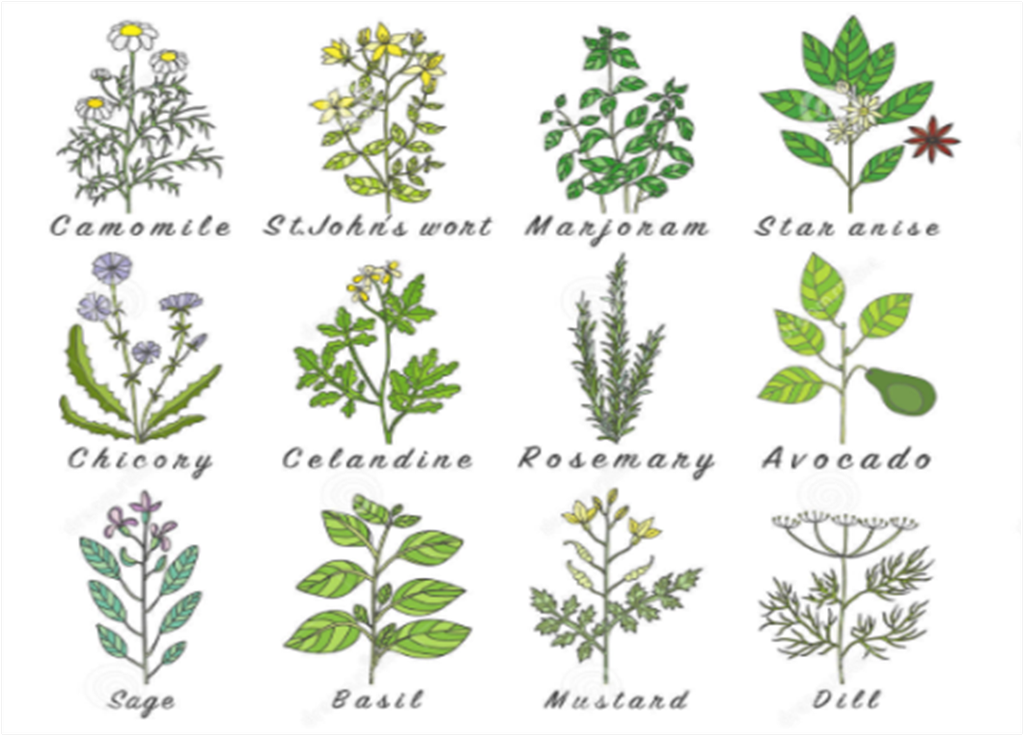
Herbs: Small plants with tender stems
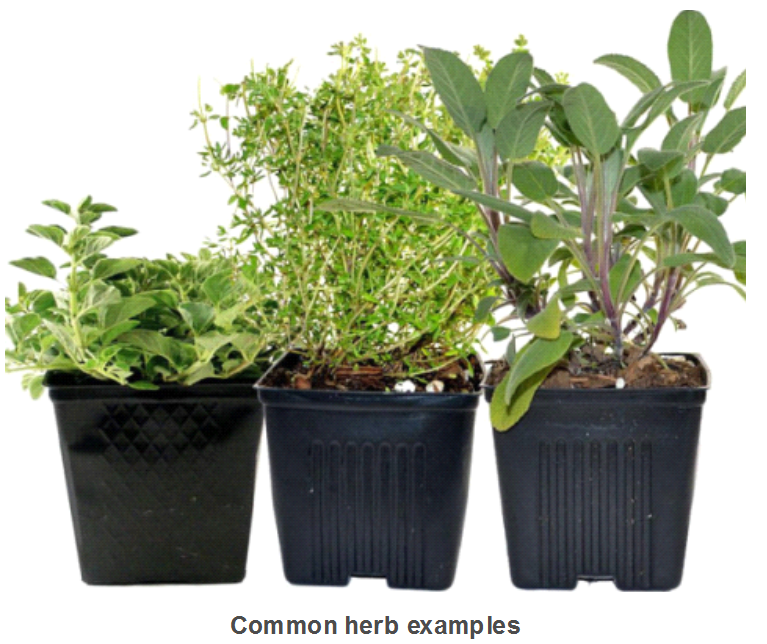
Shrubs: These are plants with hard but not exactly thick stems. Their branches generally originate from the base of their stems. These are much taller than herbs but usually shorter than trees.
Some common examples of shrubs are Aloe Vera, Rose plant, Jasmine plant, Blackberry plant etc.
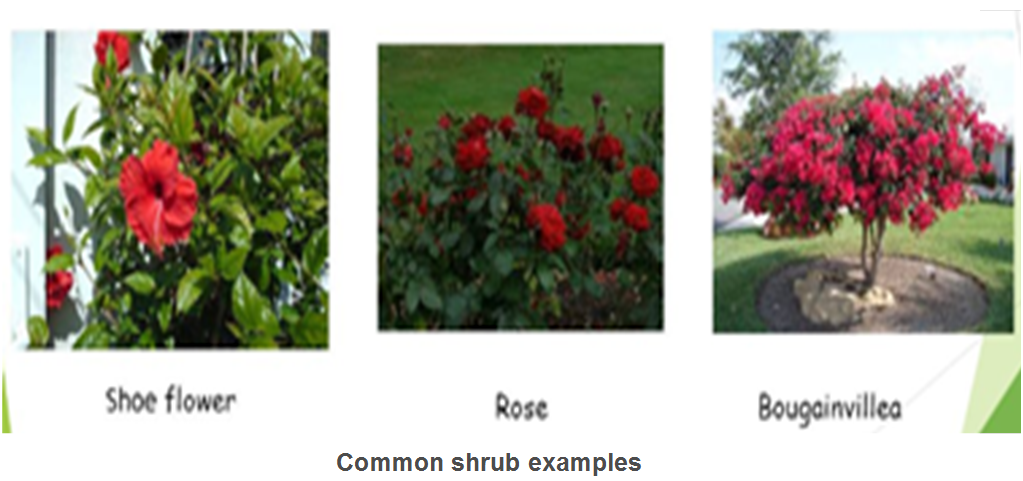
Trees:
These are plants which are very tall and have a thick and hard stem. The branches originate from the upper part of the tree and are very high above the ground.
Some common examples of trees are neem, peepal, coconut tree, mango tree etc.
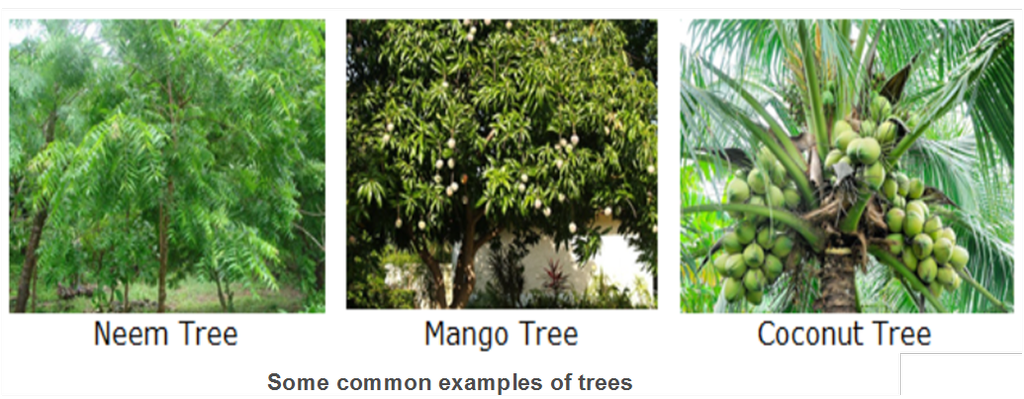
Stem
- Books Name
- CBSE Class 6 Science Book
- Publication
- Param Publication
- Course
- CBSE Class 6
- Subject
- Science
Root
The roots help in holding the plant firmly in the soil they are said to anchor the plant to the soil.
Types of Roots
(1) Tap roots (2) Fibrous Roots
1. Tap root system : When a dicot seed (seeds with two seed leaves) germinates, the radicle gives rise to a long deep - seated root. It is thick and large this is called the primary root or tap root.
• The primary root gets divided into branches which are known as secondary roots.
• The branches of secondary roots are called tertiary roots
• The primary root is longer than its branches and grows vertically downward into the soil.
• It is found in most of the dicot plants like castor, pea, mango, gram and beans.
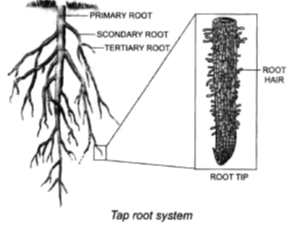
2. Fibrous Root system.
• In the fibrous root, the primary root is short - lived and is replaced by a cluster of thin fibre like roots. These are called fibrous roots.
• These roots spread from a common point and are about the same size.
• They spread out in the soil and give firm support to the plant.
• They are found in most of the monocot plants.(Plants that have seeds with single seed - leaf) Like wheat, maize, barley and grasses.
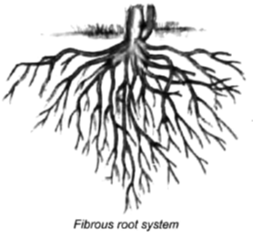
Do you know :
Leaf venation and the type of roots in a plant are related : Plants having leaves with reticulate venation have tap root while plants having leaves with parallel venation have fibrous roots.
Function of Roots
1. Fixation : It fixes the plant firmly in the soil.
2. Absorption : The root hairs help in the absorption of water and minerals from the soil.
3. Prevention of soil erosion : Roots bind the soil finely and prevent soil erosion
4. Storage : In plant like carrot, turnip, radish and sweet potato and tapioca, the roots are modified for the storage of food.
Supporting Roots
• In plants such as black pepper, money plant and betel the roots help the plant to climb up a support as the stems are too weak to stand on their own Hence they are known as climbing roots
• In plant such as banyan new roots grow downwards from the main stem or branches.These are aerial roots that grown towards the soil and act as pillar to support the plant. They are known as prop roots.

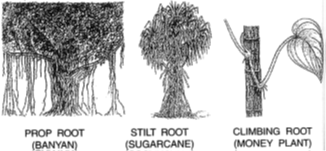
Fig. Modification of roots for support
Stem
- Books Name
- Class 6 Science Book
- Publication
- PathSet Publications
- Course
- CBSE Class 6
- Subject
- Science
Stem

- It bears leaves, buds, flowers, fruits, etc.
- The stem conducts water from the roots to the leaves and to the other parts and food from leaves to the roots and other parts of the plant.
- Potatoes, yams, ginger, onion, etc. though present in the soil, are actually stem and store food within them.
There are two other kinds of plants which are:
Creepers: These are plants which have soft, weak and green stems and hence cannot stand straight and instead spread on the ground.
Some common examples are sweet potato, watermelon, pumpkin etc.
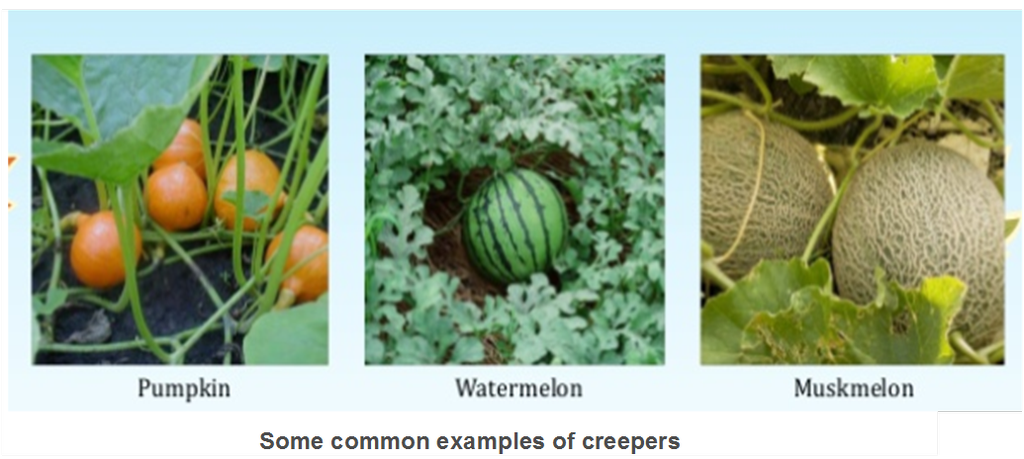
Climbers: These are also plants with soft and weak stems but instead of spreading on the ground they take support with a nearby object to climb up.
Some common examples of creepers are cucumber, bean, grapevine, money-plant etc.
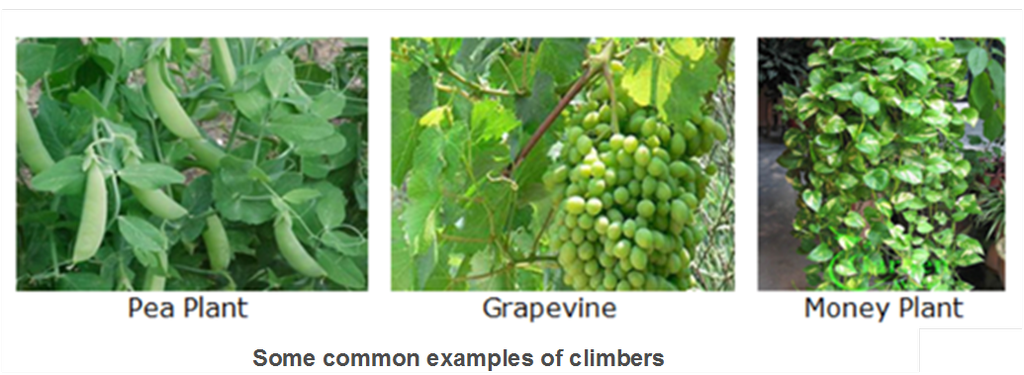
Let us observe and study each part of a plant step by step:
Stem
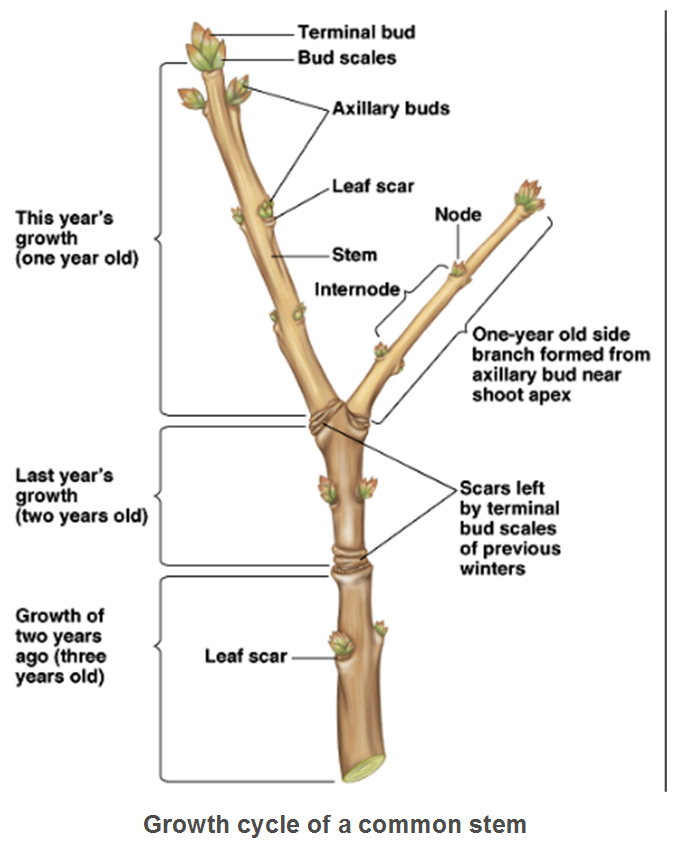
The Stem is the part of a plant which is responsible for supplying water to all parts of the plant. It is the stem which bears branches, flowers, leaves, fruits and buds. The root sucks the water and minerals from the soil and it is the stem’s function to push this water upward to other parts of the plant.
We can observe this by soaking the stem of a plant in a glass with water. On adding colored ink to the water, we observe that after a while the stem and leaves of the plant start to turn the color of the ink, which is proof that the stem carries the water to the different parts of the plant.
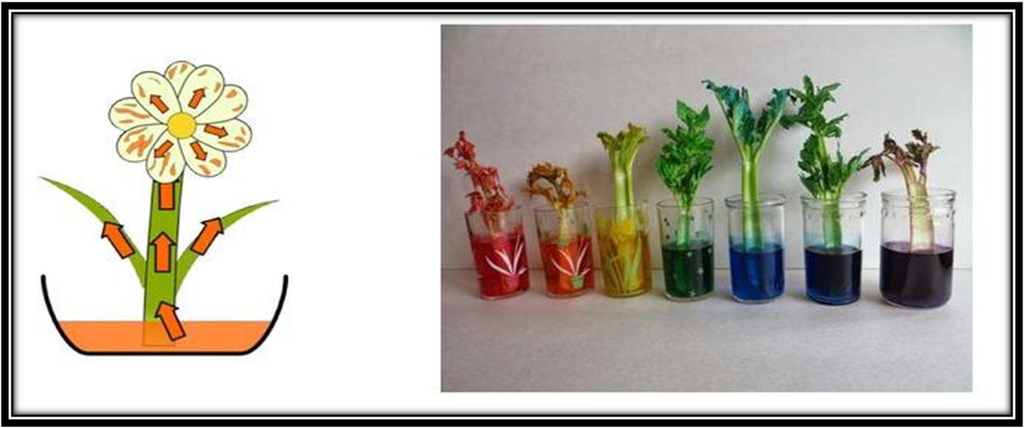
The experiment helps demonstrate how stems are responsible for carrying water to different plant parts
Leaf
- Books Name
- CBSE Class 6 Science Book
- Publication
- Param Publication
- Course
- CBSE Class 6
- Subject
- Science
Leaf
• The following parts of a leaf :
(i) Petiole : The parts of a leaf by which it is attached to the stem is called petiole.
(ii) Lamina : The broad green part of the leaf is called lamina
(iii) Veins : Lines on the leaf are called veins.
(iv) Midrib : A thick vein in the middle of the leaf called the midrib.
(v) Leaf venation : The design made by veins in a leaf is called the leaf venation. It is mainly two types :
(a) Reticulate venation : If leaf design made by veins in a leaf is net like on both sides of midrib the venation called Reticulate.e.g. Leaves of Mango, Pea etc.
(b) Parallel venation : If veins are parallel to one another in a leaf then venation called parallel venation. e.g. leaves of grass.
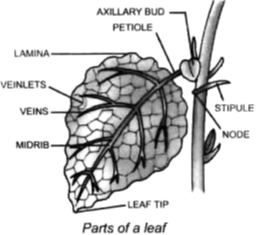
Functions of Leaf :
1. Manufacturing of Food : The leaf is called “the food factory” of a plant . Green plants make their own food by the process of photosynthesis.Leaves prepare their food in the presence of sunlight and green coloured substance (chlorophyll) present in them by utilizing carbondioxide and water by releasing oxygen.
2. Transpiration : The excess of water absorbed by the root hairs lost through the stomata.Process through which water comes out of leaves in the form of vapour.
Plants release a lot of water into the air through this process.
3. Gaseous exchange : Exchange of gases occurs during respiration and photosynthesis.
4. Vegetative propagation : In some plants, leaves bear buds in the marginal notches from which new plants grow and develop. eg. Bryophyllum, Begonia.
5. Leaves reduced to spines in a cactus plant. In a xerophytic plant, this modification helps to reduce water loss from the plant body.
Stem is fleshy and green in a cactus plant. Stem takes over the function of leaves as the leaves are reduced to spines.
Types of Leaf
• Simple and compound leaves :
(i) A simple leaf is one that consist of a single lamina, which is not divided into segments. Plants like mango, guava and money plant have simple leaves.
(ii) A compound leaf is one in which the lamina is divided into several small segments or leaflet each attached to the same petiole. The leaflet may be arranged on opposite sides of the petiole like in rose and neem or may arise from a common point at the petiole like in palm leaves.
Arrangement of Leaf
Leaves can be arranged along the stem in different ways.
(i) Alternate arrangement : In some plant, a single leaf grows from each point e.g. Mango, sunflower and mustard.
(ii) Opposite arrangement : In some plants two leaves grow opposite to each other from the same node. e.g. Guava and Tulsi.
(iii) Whorled arrangement : In some plans, three or more leaves grow from the same node.e.g. nerium and asparagus.
Modification of the Leaf
(i) Leaf tendrils : In plants like pea and sweet pea leaves are modified into long, slender, coiled structures called tendrils.
• These are used by the plants for climbing.
• Leaves are fully or partly modified to help the plant climb and support.
(ii) Leaf spines : In cacti and plants such as pineapple the leaves are modified into spines that are sharp, pointed structures.
• These structure protect the plant from grazing animals.
• In dry area, the leaves are reduced to spines to prevent loss of water by transpiration.
(iii) Leaves modified to eat insects : In some insectivorous plants, the leaves are modified into pitcher or bladder like structures to trap, hold and digest insect and small animals.
• These trapped insect are digested within these structures and serve as a source of nitrogen to the plant.
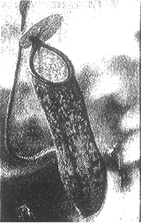
Pitcher plant
Leaf
- Books Name
- Class 6 Science Book
- Publication
- PathSet Publications
- Course
- CBSE Class 6
- Subject
- Science
Leaf
Leaf :

Leaf is the most important part of the plant. Most leaves of plants are green in colour. There are different shapes and sizes of leaves.
Different parts of a Leaf :

Leaf has different parts:
- Midrib: It is the thick vein in the middle of the leaf.
- Types of venation: Two types of venation are found:
- Reticulate: If the venation is in a net-like appearance on both sides of midrib, it is called reticulate. For example, peepal.
- Parallel: In the leaves of grasses, the veins and veinlets are parallel to one another. Such a venation is called parallel.
- Node: Places where leaves and branches are joined to stem are called nodes.
- Internodes: The part of the stem between two nodes is called internode.
Function of Leaves :
- Transpiration: The loss of water in the form of vapours from the stomata on leaves is called transpiration.
- Photosynthesis: A process by which green plants make their food from sunlight, carbon dioxide and water is called photosynthesis.
The leaves of plants are majorly responsible for performing two essential functions for the plant’s survival and growth. These two functions are called transpiration and photosynthesis.
Transpiration: Transpiration is the process through which plants release the excess amount of water in the air. When the water travels via the stem to the leaves, some of it gets used up to prepare food, while the excess water is converted to water vapour due to the presence of the sun. Transpiration is important for the plants as it helps the plants to cool down. In the absence of transpiration, the temperature of the leaf becomes unregulated which may lead to the eventual death of the plant.
We can observe transpiration by enclosing a leafy part of a plant in a closed polythene bag and keeping it in the sun. After a while, we see tiny droplets of water on the inside of polythene bags, which are proof that the leaves have performed transpiration.
The process of Transpiration
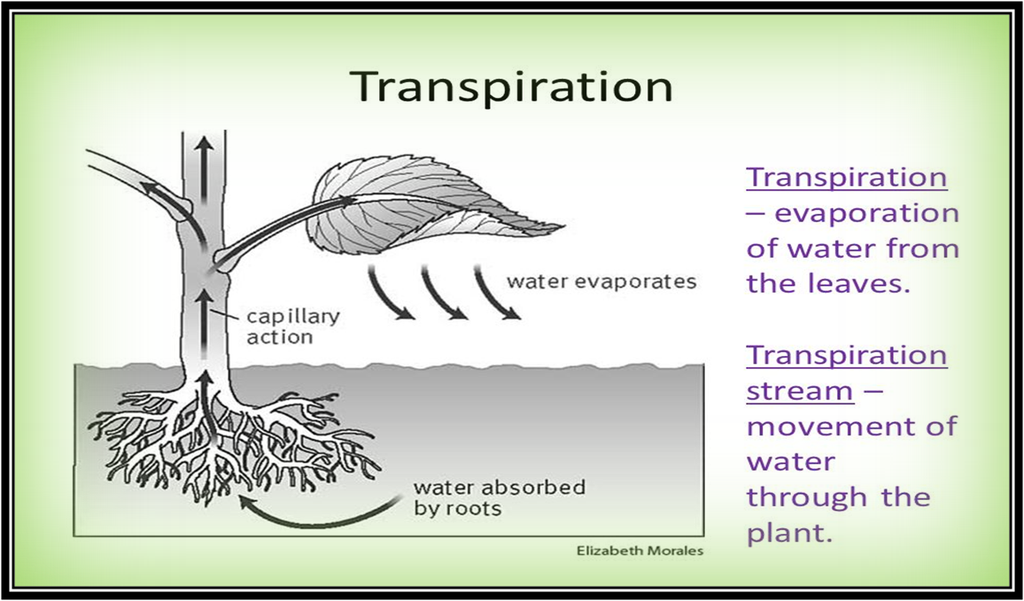
Photosynthesis: Photosynthesis is defined as the process that helps leaves prepare food for the plant with the help of carbon dioxide and water. Photosynthesis occurs in the presence of sun and is aided by the presence of a green pigment in leaves called chlorophyll. Plants also release oxygen in the process. The food prepared is stored in various parts of the plant. In absence of photosynthesis, the plant is unable to utilise the water and minerals to prepare food for its nourishment and gradually dies.
In order to see if leaves really do perform photosynthesis, we take a leaf and immerse it in a test tube filled with spirit. Placing this test tube in a beaker filled with water, we heat the beaker. After the leaf loses its color, we wash it and pour iodine solution on it, as can be seen below, which shows the presence of starch thus disproving our doubts.
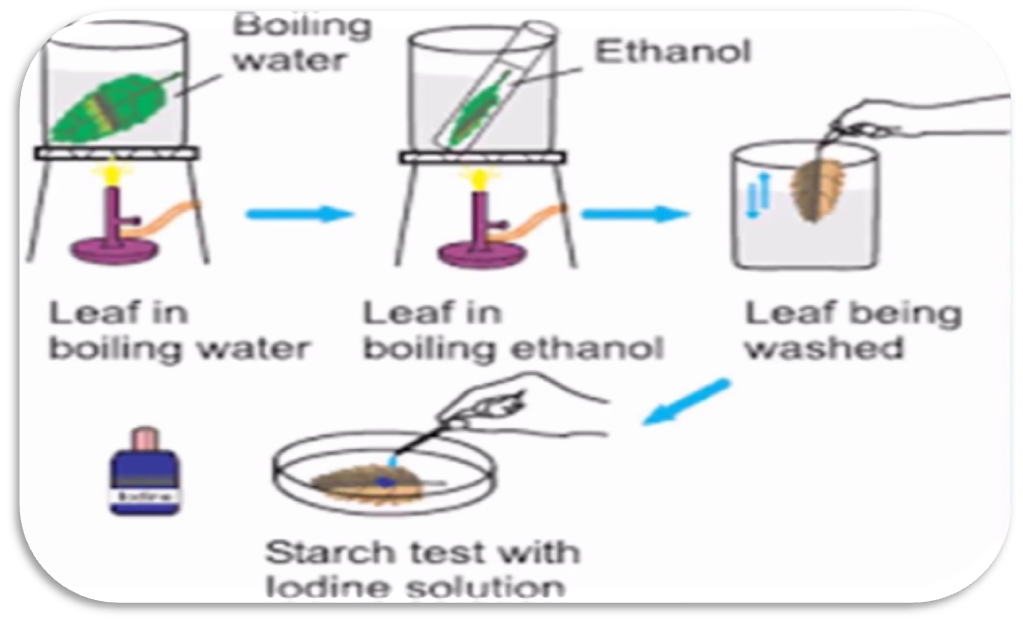
Parts of a Leaf
Petiole: This is the stalk via which the leaf is joined to the plant.
Lamina: This is the expanded part or the green portion of any leaf which is responsible for photosynthesis.
Veins: The many lines that run through the surface of the leaf are called veins and the design made by them is called leaf venation. They transport water and minerals.
Midrib: This is the central, prominent thick structure right in the middle of the leaf that helps support the leaf and prevent it from breaking.
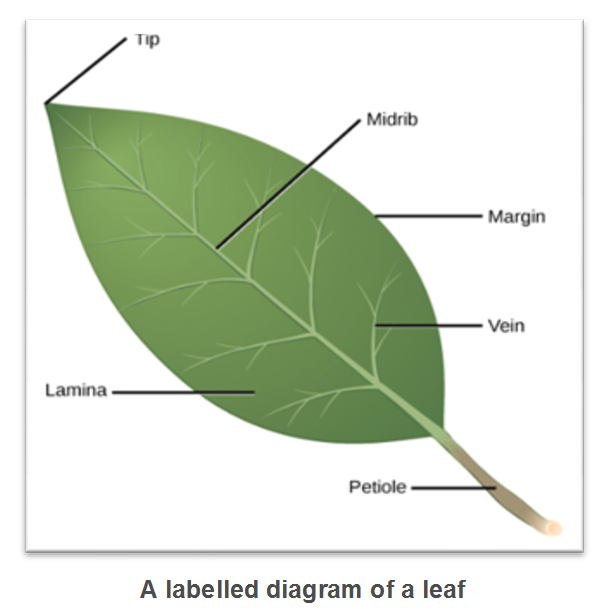
We distinguish between two major types of leaf venation.
Reticulate venation is said to exist when the veins form a net-like shape on either side of the midrib. This type of venation is seen to exist in dicots like guava and mango.
Parallel venation is said to exist when the veins run parallel to one another. This type of venation is seen to exist in monocots like banana, wheat, coconut etc.
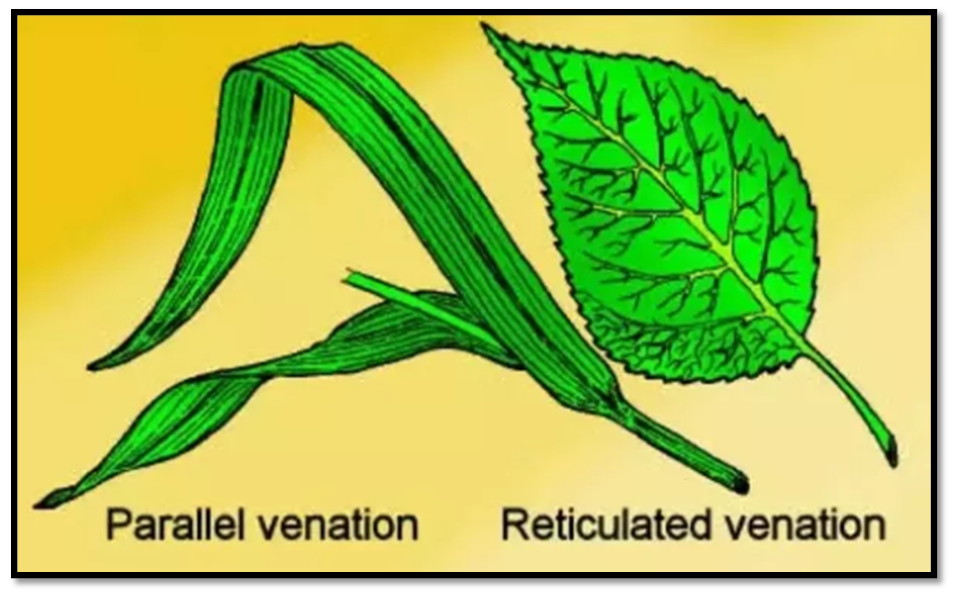
Root
- Books Name
- CBSE Class 6 Science Book
- Publication
- Param Publication
- Course
- CBSE Class 6
- Subject
- Science
Stem
• The stem is the aerial part on which buds, leaves, flowers and fruits are borne.
• It grows from the plumule of the embryo of a seed.
• It forms the main axis that connects the root system with the rest of the plant body.
• It grows away from the soil and towards sunlight.
• The stem may be branched or unbranched.
• The young stem is usually green and soft though it is hard and woody in some plants.
• Stem conduct water.
• Minerals dissolved in water also move up in the stem along with the water.
• The water and minerals go to leaves and other plant part attached to the stem through narrow tube inside the stem.
• The stem conducts water from roots to the leaves (and other parts) and food from leaves to other parts of the plant.
• The leaves grow on the stem at definite points called nodes.
• There may be one or more leaves at a node.
• The part of the stem between two successive nodes is the internode.
• The angle formed between the base of a leaf and the stem is termed as leaf axil.
Primary Function of Stem :
1. Support : It supports branches, leaves, flowers, fruits and buds.
2. Transportation : It helps in the transportation of water and minerals salts absorbed by the roots of the plant and helps in supply of food from the leaves to various parts of the plant.
3. Food storage : The stem also functions as the storehouse of food material as in case of potato, garlic, ginger.
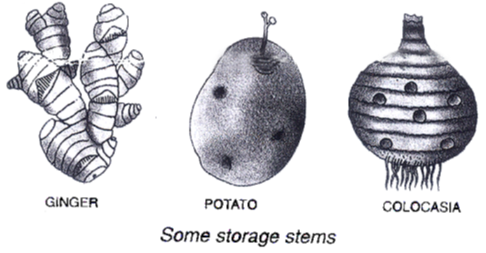
4. Climbing : In weak plants like the gourd, bitter gourd the stem gets modified to form tendrils which help the climbers in climbing.
5. Photosynthesis : The green stem can make food for the plant as in the case of cactus.
6. Perennation : Certain underground stems like potato, garlic and ginger help the plant to tide over unfavourable climatic conditions this is called perennation.
Secondary Function of Stem :
(i) Support : In plant such as bean, sweet potato and morning glory the stem spirals around a support as it is weak and slender. Climbers are also known as twinners.
(ii) Making food : In plants such as cacti which grow in dry climates, leaves are reduced to spines or scales to prevent loss of water. Such plants have a flattened or cylindrical green stem to manufacture food. It also stores food and water for the plant.
(iii) Storage of Food : In some plants the entire stem remains underground and only leaves and flowering shoots are seen above the ground. It is thickened to store excess food which helps plants to survive through long bad seasons. Examples are ginger, potato and onion. Potato, onion and ginger not considered as root. These have node and internodes and scaly leaves.
Root
- Books Name
- Class 6 Science Book
- Publication
- PathSet Publications
- Course
- CBSE Class 6
- Subject
- Science
Root
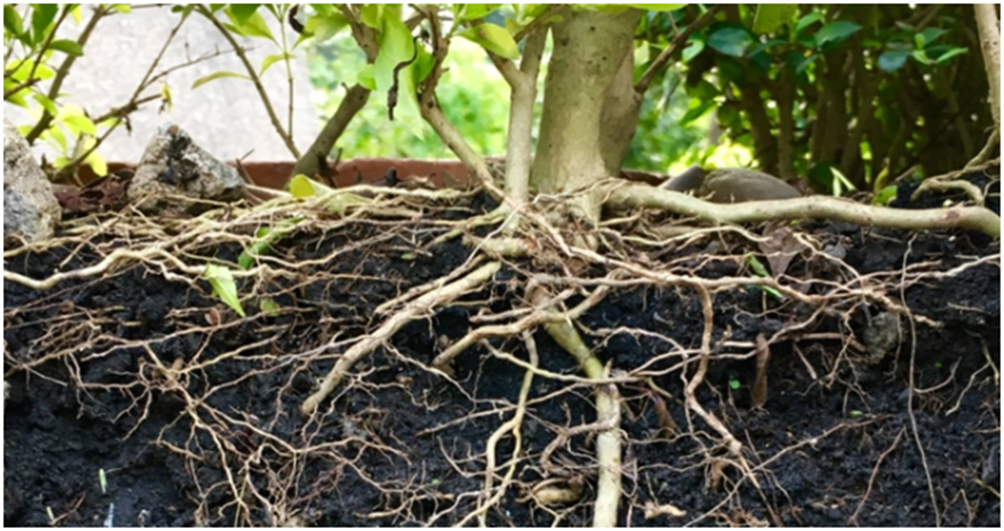
- Roots are mostly the underground part of the plant.
- They absorb water and minerals from the soil.
- They hold the soil firmly to keep the plant upright.
- Some roots store food and become plump.
There are two types of roots :
- Tap root : Tap roots are seen in large trees and shrubs.
- Fibrous root : Fibrous roots are common in herbs
The root is a very important component of the plant system, as, without the presence of roots the plant ceases to exist. This is because the roots perform three major functions essential to the growth and survival of the plant which are:
- Roots are responsible for absorbing minerals and water from the soil and transferring them to the stem. It’s only after root has transported water and minerals to stem that the stem becomes capable of transporting these to all parts of the plant.
- Another important function of roots is to firmly anchor the plant in the ground. This is essential to support the upright position of the plants.
- Roots also perform the function of storing important nutrients and food for growth.
There are two major types of roots that exist in plants and these are:
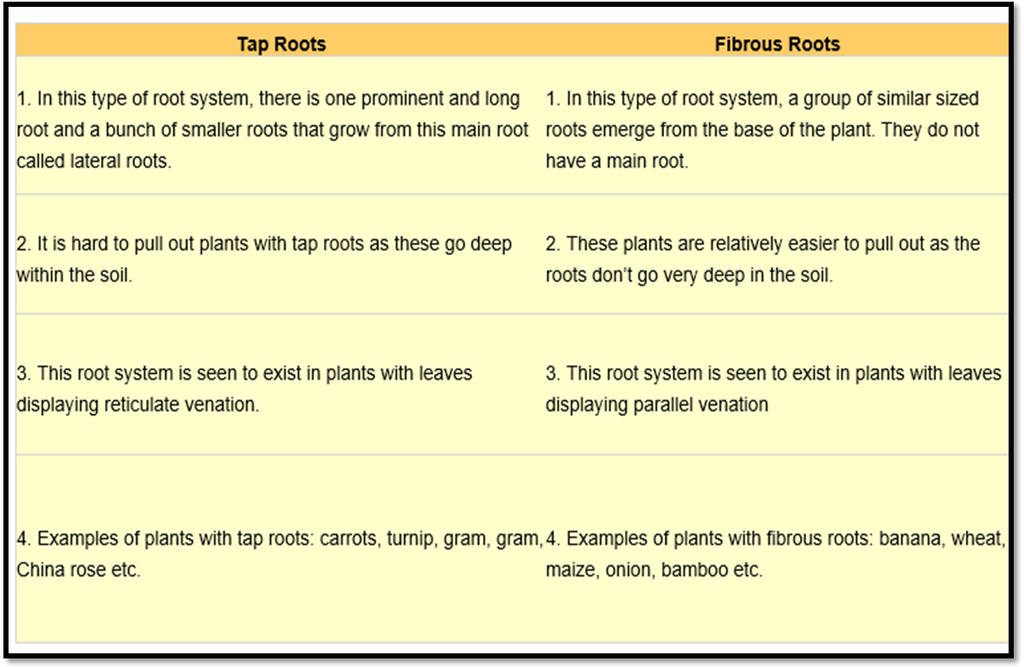
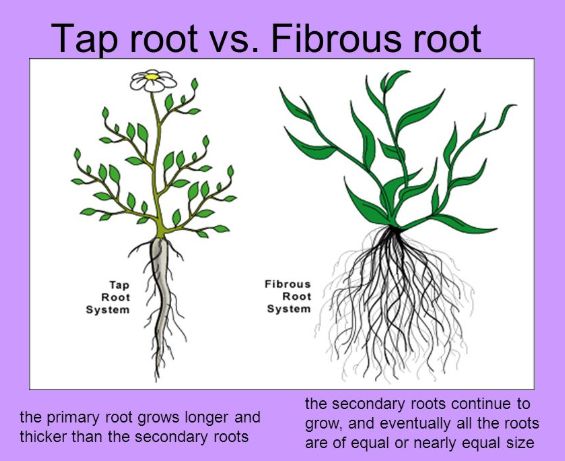
Flower
- Books Name
- CBSE Class 6 Science Book
- Publication
- Param Publication
- Course
- CBSE Class 6
- Subject
- Science
Seed
• After fertilization an ovule develops into an seed
• The seed contains stored food which is used in the development of a new plant.
• The Seed contains :
• A seed contains the plumule which grows into the shoot and the radicle which grows into the root.
• Seed has one or two seed leaves or cotyledons which contain food for the baby plant.
• A seed coat that generally covers the seed and it protects the seed
• The fruit :
• The fruit is ovary of the flower develops into fruit and the ovules in it become seeds after fertilization.
• A fruit is actually a ripened ovary and seeds are ripened ovules of a flower.
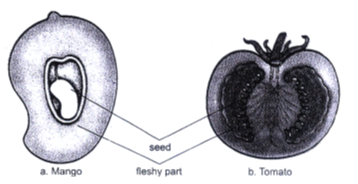
Cut section of Mango and Tamato
Flower
- Books Name
- Class 6 Science Book
- Publication
- PathSet Publications
- Course
- CBSE Class 6
- Subject
- Science
Flower
The flowers are the colourful, seed-bearing parts of the plant that grows at the end of the stem. A typical flower exhibits the following structure:
Petals: These are bright, colourful and broad parts of the flower. Taken together, the petals of the flower form what is called a Corolla.
Sepal: This is the green, leaf-like structure of the flower that encloses the petals and is responsible for protecting the flower when it is in its bud form and supporting it when it is in its bloom stage.
Stamen: These are the long and slender parts of the flower that become visible upon removing the petals and sepal of a flower. Typically, a stamen consists of an anther i.e. the head of the stamen and a filament i.e. the long cream-colored stick. The stamen is also known as the male reproductive part of the plant.
Pistil: This is the innermost part of the flower, typically consisting of a stigma i.e. the head of the pistil, a style, which is the long sticky part that attaches the stigma to the ovary i.e. the small and swollen sphere at the base of the pistil. Pistil is the female reproductive part of any flower. The ovary contains small bead-like structures which are called ovules.
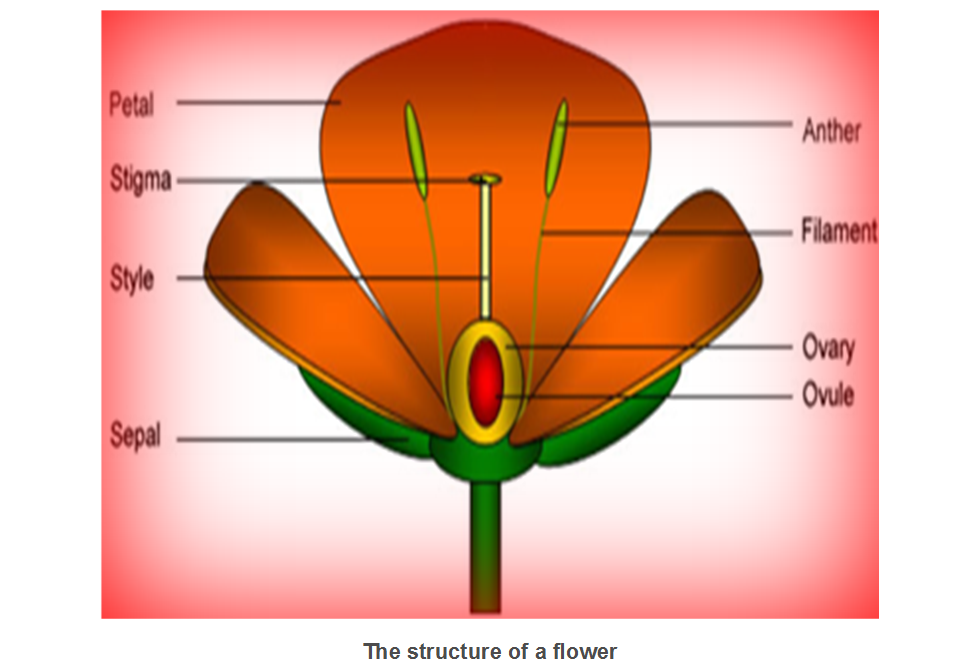

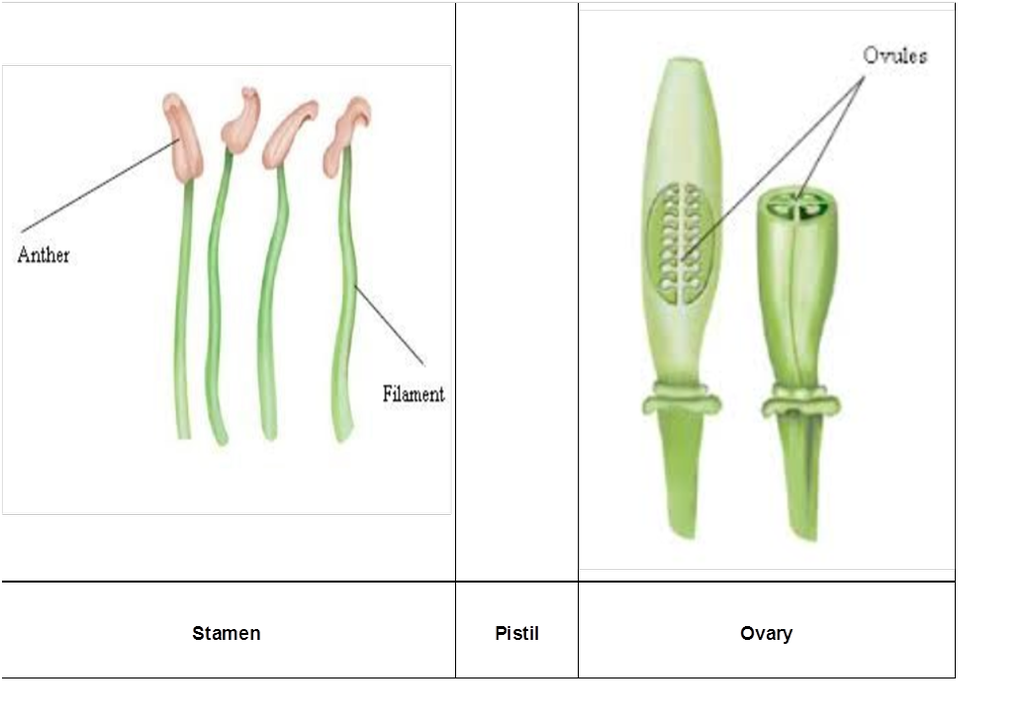
Important Definitions
Stomata: These are the small microscopic pores present on the leaf through which exchange of gases and transpiration takes place.
Annuals: These are plants like wheat and maize that complete their life cycle in one season and then die. They are usually herbs.
Biennials: These are plants like carrots and radishes that complete their life cycle in two seasons.
Perennials: These are plants guava and palm that continue their life cycle for more than two seasons, i.e. they manage to re-grow every spring.
Aerial roots: These are roots of plants and trees that grow above the ground instead of under the ground as shown in the image below.

Flower :

A flower is the part of a plant that is responsible for making new seeds. It is often made of petals and may have an attractive scent.
Reproduction in flowering plants:
Flowering plants make new seeds inside the flower using male and female parts. Some plants, such as holly trees, may have either male or female flowers. If a tree has male flowers it will never produce any berries : they are only produced on trees with female flowers.

Flowers, Fruits, and Seeds:
A flower is the reproductive organ of a plant. A seed is an enclosed dormant embryo of a plant. They are found in the fruits and when sown, gives rise to a new plant.
Conclusion:
- The parts that remain under the ground (roots) form the root system.
- The parts above the ground (stem, leaves, flowers, and fruits) form the shoot system.
- There are two main types of root systems: tap root system and fibrous root system.
- Roots may be modified for support, storage of food, propagation, etc.
- Stems may be modified for support, protection, photosynthesis, food storage, and reproduction.
- Leaves are green because they have a green pigment called chlorophyll. Green leaves manufacture their food with the help of carbon dioxide, water, and light.
- Flower is the reproductive organ of a plant. Flowers have petals, sepals, stamens, and carpel.
- The pollen grains need to be transferred to the stigma from the anther of the flower for pollination.
- The seed has an embryo, which develops into a new plant under suitable conditions.
Important Terms
Climbers: A plant having thin, long and weak stem which cannot stand upright but, readily climbs up a neighboring support (like a fence) or a tree is called a climber.
Conduct: To carry a substance from one place to other is called conduct.
Creeper: A plant having thin, long and weak stem which cannot stand upright and spreads on the ground is called a creeper.
Fibrous root: Some plants do not have a main root. They have a bunch of similar roots called fibrous roots.
Herbs: Herbs are small plants having a soft and delicate stem.
Lamina: The broad green part of the leaf is called lamina.
Lateral roots: Smaller roots which arise from main roots in the taproot system are called the lateral roots.
Midrib: The thick vein in the middle of the leaf is called the midrib.
Ovules: Small bead-like structures attached in the inner wall of the ovary are called ovules.
Parallel venation: In the leaves of grass, veins are parallel to one another. This is called parallel venation.
Petals: Petals are variously coloured leaf-like structures present in the flowers.
Petiole: The part of leaf by which it is attached to the stem is called petioles.
Photosynthesis: A process by which green plants make their food from sunlight, carbon dioxide and water is called photosynthesis.
Pistil: The innermost, female reproductive part of a flower is called pistil.
Reticulate venation: When veins and veinlets form a net like design in both sides of midrib, the venation is called reticulate venation.
Sepal: Sepal is the outer green part which protect the inner parts of flower when it is a bud.
Shrubs: Shrubs are medium-sized plants with a hard and woody stem branching out near the base.
Stamen: Stamen is the male reproductive part of a flower.
Taproot: The root system in which a single root arises from the base of the stem, with secondary and tertiary branches is called taproot system.
Transpiration: The loss of water in the form of vapours from the stomata in leaves is called transpiration.
Trees: Trees are tall and big plants with a hard and thick woody stem.
Veins: Threadlike structures in leaf are called veins.

 Param Publication
Param Publication
 PathSet Publications
PathSet Publications
